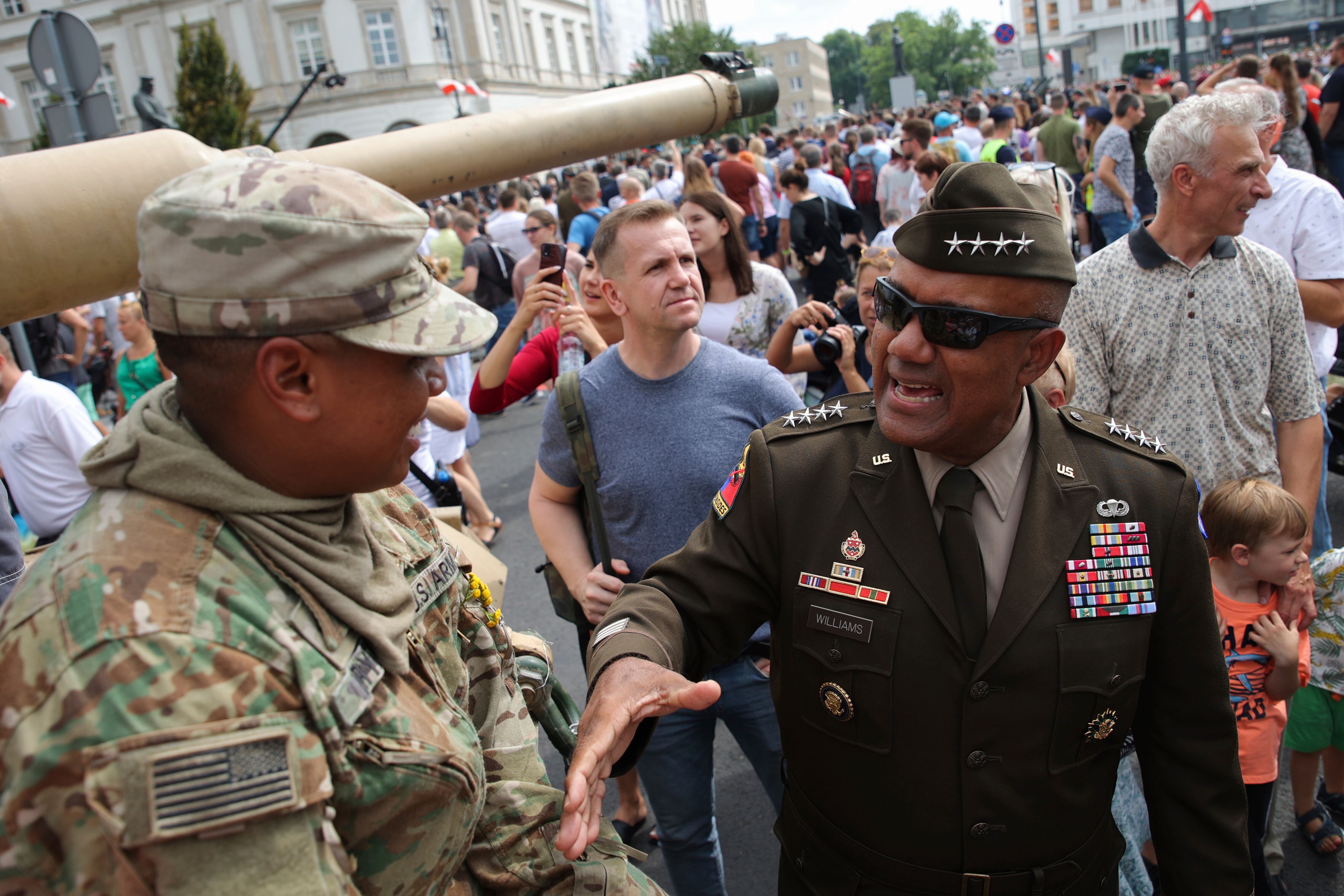WASHINGTON — Gen. Darryl Williams has been the commander of U.S. Army Europe and Africa since June 2022, a job that puts him front and center in NATO efforts to fortify the eastern front after Russia’s invasion of Ukraine. He spoke with Defense News in late September about his observations on the war and why standardized artillery training among allies is all the rage. This interview was edited for length and clarity.
As a member of the ground profession, what are your thoughts on the way the war in Ukraine has played out?
As the guy responsible for the coherency of land [operations] in Europe, I think that things are going pretty well, from NATO’s perspective, in terms of how we are supporting and enabling our Ukrainian counterparts. It’s probably too early to tell the full lessons learned from it. The U.S. Army and the armies of NATO are learning organizations. And certainly, we will pass down the lessons that we’re learning, but I think it’s still premature. It’s early in this campaign.
What do I think about it? I’m very proud of the Ukrainian Armed Forces. And I’m very proud of how they’re conducting and comporting themselves. They strike me as — I’ve met a few of them, not at all of them — but they are professional. I’m really impressed about how they’re conducting themselves in the land domain.
What do you make of the Germans beating themselves up, or getting beaten up, over their hesitation to deliver Leopard tanks to Ukraine?
I’ve been a big fan of the great country of Germany and have been here since I was an oberleutnant in the early 1980s. They continue to be strong members of NATO and are doing their share, like other members.
Some analysts have noted an absence of a meaningful air component in how the war is playing out. What do you think of that?
All of the domains are being challenged, not just land. You may not see it being realized, but my read of the battlefield is that all of the domains are being operated by both sides. Our job as the land governors, if you will, is to ensure that all of those domains are integrated to have effects on the land.
On military mobility in Europe, what improvements and setbacks have you seen in transporting equipment and troops?
As I mentioned, I’ve been here since the early ’80s, and I’ve been back to subsequent tours. I’ve always seen improvements along those routes. We have some more to go. But I see a lot of interoperability TTPs — techniques, tactics and procedures — being shared among the alliance.
At 7th Army Training Command down in Grafenwöhr and Hohenfels, for example, there’s an opportunity for our allies to come in and practice mobility and interoperability. In fact, we just finished an exercise last week, where we had multiple allies supporting our airborne brigade combat team, the 173rd, at exercise Saber Junction.
I’m on the upside of where we are in that respect. It’s only going to get better as we continue to engage.
Looking at upcoming exercises, what are you keen to see U.S. Army forces and allied forces get better at?
What you’re trying to get through exercises is trust: confidence in your own personal, your own nation’s equipment, as well as confidence in other nations’ equipment, confidence in each other’s soldiers. And then there is standardization.
We have one exercise that we do here, which was actually very nascent when I was here a few years ago, called Dynamic Front. It was as big as it’s ever been this past year, and it’s going to get bigger next year. As you can see, in the fight going on right now, artillery is at the forefront in a very, very big way. Dynamic Front allows us to get at standardization across the alliance and how we better standardize fires, ensure that we can be there for fire support.
What came out of your recent talks with Swedish and Finnish army leaders?
It was really about plotting the way ahead and looking for opportunities for mutual engagement, interoperability and standardization, as they are aspirational members of NATO. It was about improving on what we’ve already done for some time, and then talking about potentially thickening those relationships as we go forward.
The unique skill set they bring is Arctic training. And potentially there’s an opportunity for our own Army units with that specialty, like the 10th Mountain Division, for linking them up and continuing to train together in that respect.
Sebastian Sprenger is associate editor for Europe at Defense News, reporting on the state of the defense market in the region, and on U.S.-Europe cooperation and multi-national investments in defense and global security. Previously he served as managing editor for Defense News. He is based in Cologne, Germany.





